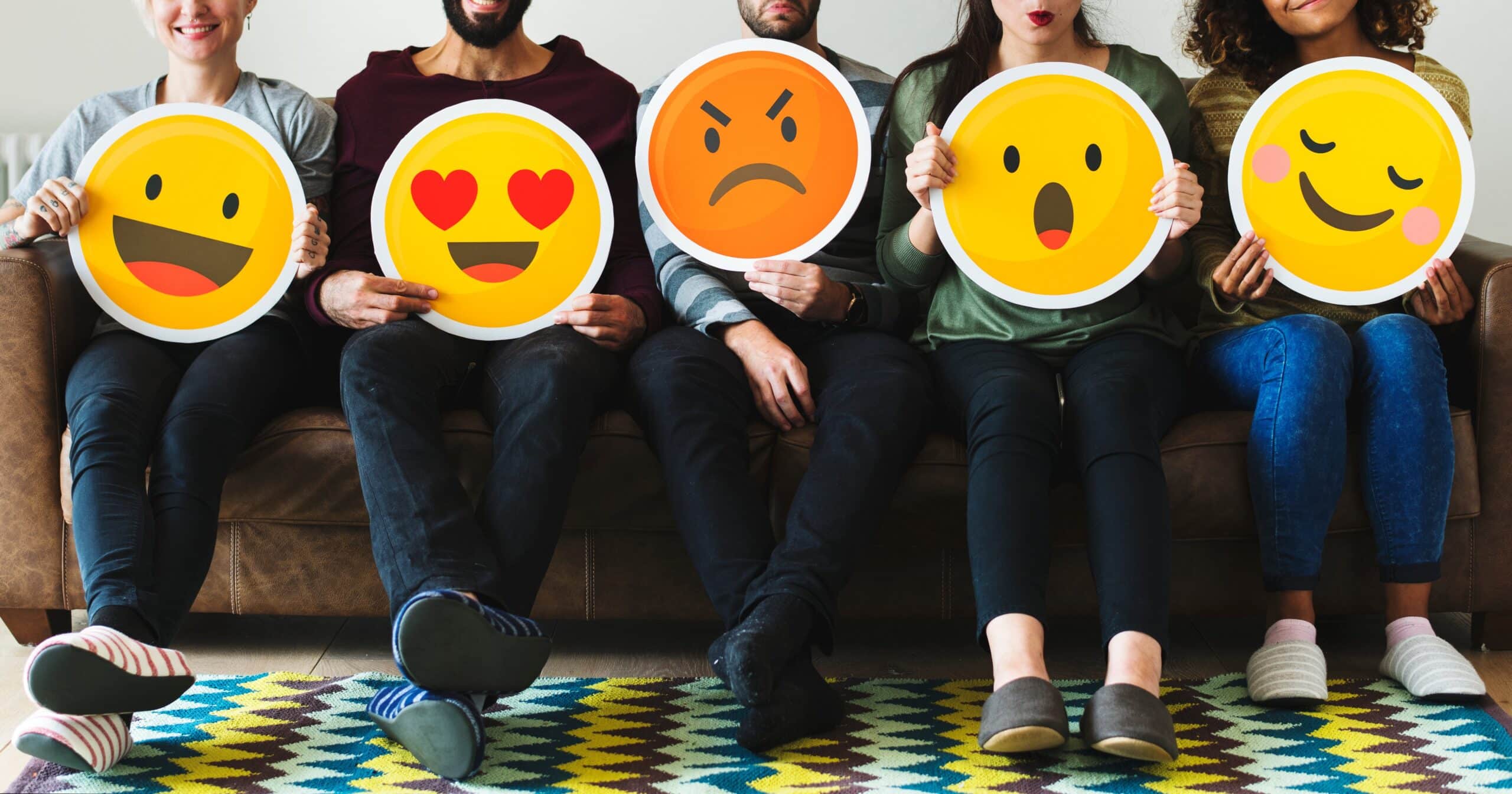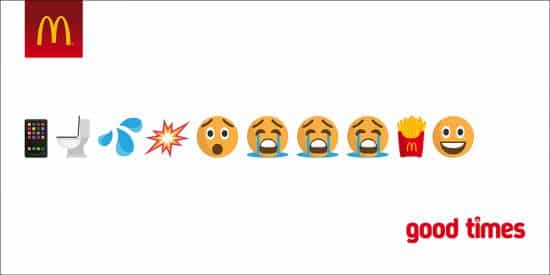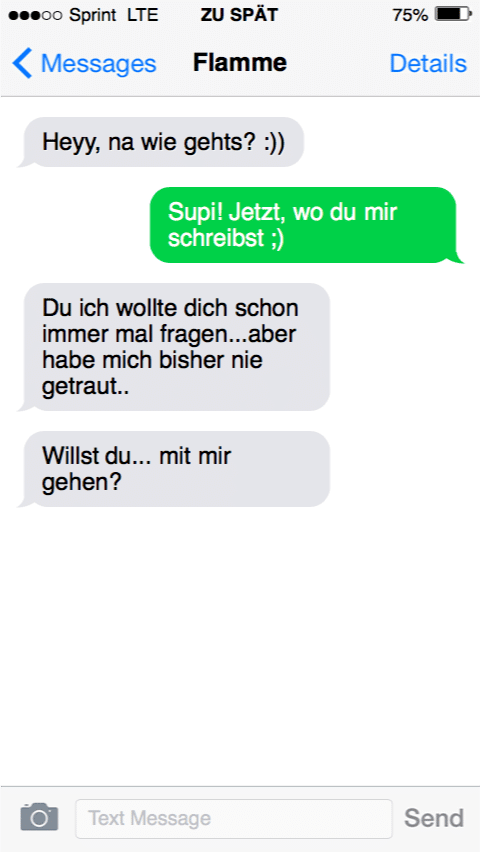Brand Storytelling with Emojis – From “Snackable Content” to Independent Stories

I remember as if it was yesterday. With my clunky screen as the only light source, I sit tense in front of the keyboard and expect another response from my crush in the chat room while my heart is beating. A personal conversation? Never would have worked. Too shy – and it wasn’t really necessary. A well-considered text message says more than a thousand frogs in your throat. Especially if the answer ends with a ;).
Two signs, but an abundance of meanings. Emoticons like ;), 😀 and 😛 were used by millions of teens in chats like ICQ, MSN and SchülerVZ to enrich the language with more emotions. These young people are now adults and they discovered how to market these portable emotions. But can the smileys known today as “emojis” also be used for storytelling and if so, how exactly would that look like?
“Emoji-miny” – The “Emoji-miny” – The conscience of a text message of a text message
As the name suggests, Emojis convey emotions. In fact, a study found out that the same parts of our brain are stimulated when we look at a smiley online as if we were looking into a human face. To a certain extent, this means that it makes online conversations more personal and human. This is especially useful in social media such as Facebook, Instagram and WhatsApp to reach users and make a message quick and easy to understand. According to a YouGov survey, 59 percent of all 18- to 34-year-olds and 49 percent of all 35- to 49-year-olds say that Emojis texts lend clarity. In a sea of information, these small, round faces even loudly marvelous manage to increase the interaction on Instagram by up to 47 percent.
So, it quickly becomes clear: companies with social media channels should refine their contributions with a pinch of emotion. But just like in a recipe, it is important to find the golden mean, because excessive use could be reckless and pushy.
The thin line of emoji marketing
Social media offer many companies the opportunity to cultivate personal contact with their customers with target group-oriented contributions. Here, traditional rules of corporate communication seem to have been turned upside down: you address somebody rather informally than formally. Bureaucratic German is replaced by colourful language and emojis. Particularly in marketing, these play an increasingly important role. This so-called “Emoji-Marketing” should be learned first like every form of marketing and above all correspond to the target group, because campaigns can quickly backfire.
Coca-Cola shows how to do it right. With their emoji campaign #ShareaCoke on Twitter, they made their self-designed emoji a worldwide trending theme, in which users who use the hashtag also post the picture. This so-called “Hashflag” is an image that appears together with a used hashtag. Thus the Coke Emoji was spread all over the world.
The Domino’s pizza chain also managed to cleverly integrate Emojis into its marketing strategy with a little trick. Sending a Pizza-Emoji ?is sufficient to place an order with Domino’s Chatbot.
A negative example can be found in the Twitter profile of presidential candidate Hillary Clinton. During her campaign, she addressed young voters, who are supposed to express their feelings about student debts with three emojis.
Overcoming the narrow ridge of emoji marketing requires a precise understanding of your own target group. Also, a credible benefit of Emojis in corporate news arises from the detailed knowledge of the character of his own company.
Emojis are story assistants
Is it possible to do marketing with emojis and use the portable emotions for storytelling? The answer, as in many cases, is “yes, but…”. Because as we already had to painfully determine by the four golden raspberries and the 38 percent on rottentomatoes for the Emoji movie, Emojis are not independent characters, but serve as tools to give short texts clarity and humanity.
Emojis have the unique ability to tell simple stories and express emotions across languages. This gives people the potential to identify with the stories regardless of their origin.
This means that Emojis are perfect for telling microstories as part of a larger brand story. However, before scattering emojis on your contributions like sugar sprinkles on a cake, be careful. First of all, a company must understand and define its own character and analyze its brand perception. This gives a company the wisdom of what Emojis are all about and how to integrate them into their communications. If the budget is available, you can also design your own emojis on Twitter and Facebook to take the approach to the next level and establish it in the community.
If you follow these steps, the goal of Emoji Storytelling is within reach. As with many marketing trends, McDonald’s is leading the way with its “good times” campaign on posters:

Short Emoji stories like these manage to connect emotions with products. The poster immediately catches the eye and the successful decoding of the story gives us a feeling of success, as if we were uncovering a murder case at Cluedo. The posters were awarded gold at the “Big Campaign Awards”.
With a view to the future, the use of Emojis has a potential that every company should keep on screen. Emojis will not only be tied to our screens but will play a more important role in many situations of our lives. Already in places such as public toilets and facilities such as airports, they are used as a customer feedback tool so that we can express our feelings about various products and contributions. So if the toilet is clean and the emojis are mounted at the exit, we like to give a “smiley face”.
For those who want to explore the potential of Emojis, I leave Disney’s “As Told By” YouTube series for inspiration. If you’re wondering what “Rapunzel – Neu Verföhnt” would look like as an Emoji story, please, you’re welcome:
Share this article
Related articles

8 April 2025








